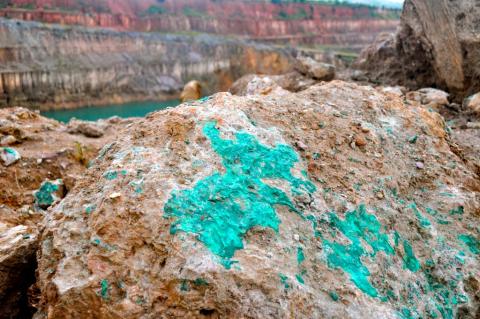
Mongolia’s new government challenged by a vulnerable economy
Mongolia’s new government challenged by a vulnerable economy
Mongolia's latest EITI Report underlines the degree to which the country's economy is dependent on the extractives sector. The document, covering 2013, shows that extractives provided more than 30% of total government revenue in 2013, and accounted for 91% of total exports, with coal, copper, iron ore and oil dominating. In 2014, the mining sector has doubled its share of the economy over the previous decade. This drove Mongolia’s economy to grow at double-digit rates in that period.
In 2013, Mongolia’s revenues from the sector plateaued at around US $1.15 billion.
Challenges facing extractives sector
The high dependence on the extractives sector, and the geographic location of Mongolia – lodged between Russia and China – make the Mongolian economy particularly vulnerable to external developments. Furthermore, almost two-thirds of the revenue in the sector in 2013 came from four companies: Erdenet Mining Corporation (coal), Oyu Tolgoi LLC (copper/gold), Petro China Daching Tamsag LLC (petroleum) and Mongolyn Alt LLC (coal). The report underlines these vulnerabilities through a detailed expose of the sector and individual commodities. Coal is Mongolia’s largest export and is estimated to reach almost 30 million tonnes in 2014, with 90% expected to be delivered to China. The giant Erdenet plant alone was responsible for 30% of total government revenue from extractives in 2013. To diversify its customer base, the Mongolian government plans to build transport routes to export coal globally through the port of Vladivostok.
The government has a direct stake in copper, the country’s second largest export product. The Mongolian government currently owns 34% of the Oyu Tolgoi copper and gold mining project, which accounted for 12% of government revenue from extractives in 2013. To reduce its risks associated with the project and falling commodity prices, the government is currently negotiating a swap of its ownership against royalty payments.
In the case of iron ore, the country’s third largest export product, Mongolia is currently sending its high quality ore for processing to China. The product can be then resold for a higher price on the market. Building capacity in processing iron ore could further strengthen Mongolia’s position.
A similar situation appears for oil processing. Instead of processing its own oil, it exports crude and imports refined oil from Russia. Only 2% of oil is refined in Mongolia. With proven reserves of 2.3 billion barrels, building capacity in processing and storage could shield the country from some of the effects of falling oil prices: 11% of government revenue from the extractives sector in 2013 was generated by two blocks operated by PetroChina.
Report covers new terrain
The coverage of EITI reporting in Mongolia continues to expand. 1617 companies were included in the report. In addition, Mongolian citizens now have access to information on social payments to individual government institutions and NGOs; the status of the implementation of annual mining and environmental rehabilitation plans; contracts between extractive companies and local authorities; and and the names of individuals who own more than 5% of the shares of more than 216 operating companies.
To find out more about the EITI in Mongolia, visit their website at www.eitimongolia.mn or the country page at eiti.org.



